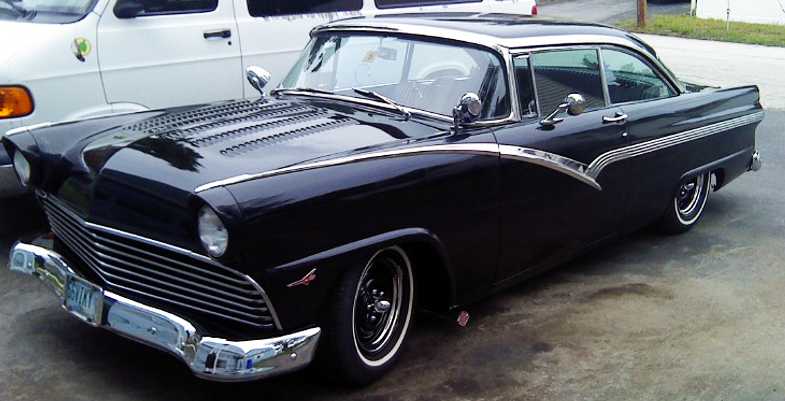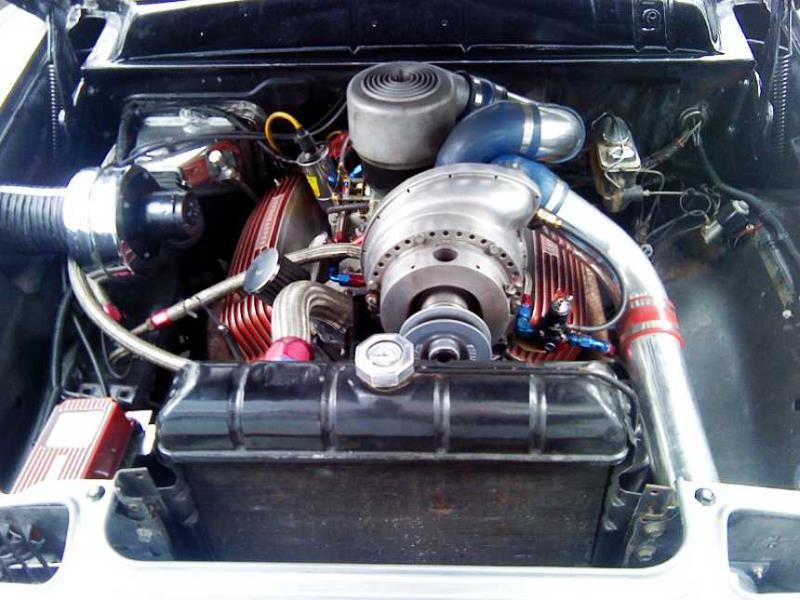|
Group: Forum Members
Last Active: Yesterday
Posts: 4.6K,
Visits: 38.4K
|
DIrt could have put a strain on the fuel system and could cause bad mileage. Time for another road trip.
Y's guys rule!
Looking for McCullouch VS57 brackets and parts. Also looking for 28 Chrysler series 72 parts. And early Hemi parts.
 
MoonShadow, 292 w/McCulloch, 28 Chrysler Roadster, 354 Hemi)
Manchester, New Hampshire
|
|
Group: Administrators
Last Active: Yesterday
Posts: 7.5K,
Visits: 205.8K
|
56Roger (12/5/2015)
Your engine's rpm will always be the same at any given speed unless the gear ratios are changed somewhere in the drive train. Effective tire height must also be considered. But otherwise the only way for it to be different than it has ever been is for the tires to have lost traction (spinning/skidding) or the clutch/auto transmission to be slipping. The relationship between the tires rotating along the surface of the road through the drivetrain to the crankshaft rotating in the crankcase doesn't change no matter how well or poorly the engine is running. It's after the fact.
Good thing too, would pretty much make your speedometer useless if it didn't.While that statement is true for a standard transmission equipped vehicle, it does not hold true for an automatic transmission. The torque converter by design does exhibit a given amount of slippage and where the rolling resistance is increased, the engine rpms will be higher versus where the rolling resistance is less. The exception to this is the ‘lockup converter’ design which gets around the built in slippage factor but that lockup only occurs when the engine is under its least amount of strain. Even within the manufacture of torque converters for the same application, there is a given amount of variability in the slippage between these. This among other factors helps to explain why some cars although identical in manufacture have better fuel mileage than others. The speedometer gear runs off of the transmission output shaft which will not reflect rpm variances from the converter forward.
  Lorena, Texas (South of Waco) Lorena, Texas (South of Waco)
|
|
Group: Forum Members
Last Active: Last Year
Posts: 927,
Visits: 190.0K
|
ted is bang on re the torque slippage,but torque charging pressure has a direct bearing on the slippage,which will never be eliminated toatley.shift quality and torque eficency are all controlled by pressure, via the control valve and the throttle pressure .adjustment. until these pressure are correct and to speck your search for better milage is like the dog chasing his tail.
|
|
Group: Forum Members
Last Active: Last Year
Posts: 357,
Visits: 25.5K
|
meteor, that's an interesting consideration. I hadn't really thought about it but would have assumed that as long as the converter was filled and the clutches/bands fully applied, converter slip would be the same regardless of throttle pressure because the converter elements would not "care" what the pressure in the shell was relative to atmosphere. I understand throttle pressure as balancing with governor pressure and influencing shift events (timing, quality, rate) and not having a significant direct bearing on converter behavior (beyond the effects of being in different gears).
I'm working on my first measured tank of gas still, gauge is showing 5/8 full and I've gone about 100 miles. That looks better than it's ever been but I also recalibrated the fuel gauge (so it wouldn't tell me I had fuel when I actually was empty). Consequently, I don't know how I'm doing relative to the norm and will just have to wait and see until it's time to fill up.
1954 Crestline Victoria 312 4-bbl, 3-speed overdrive
|